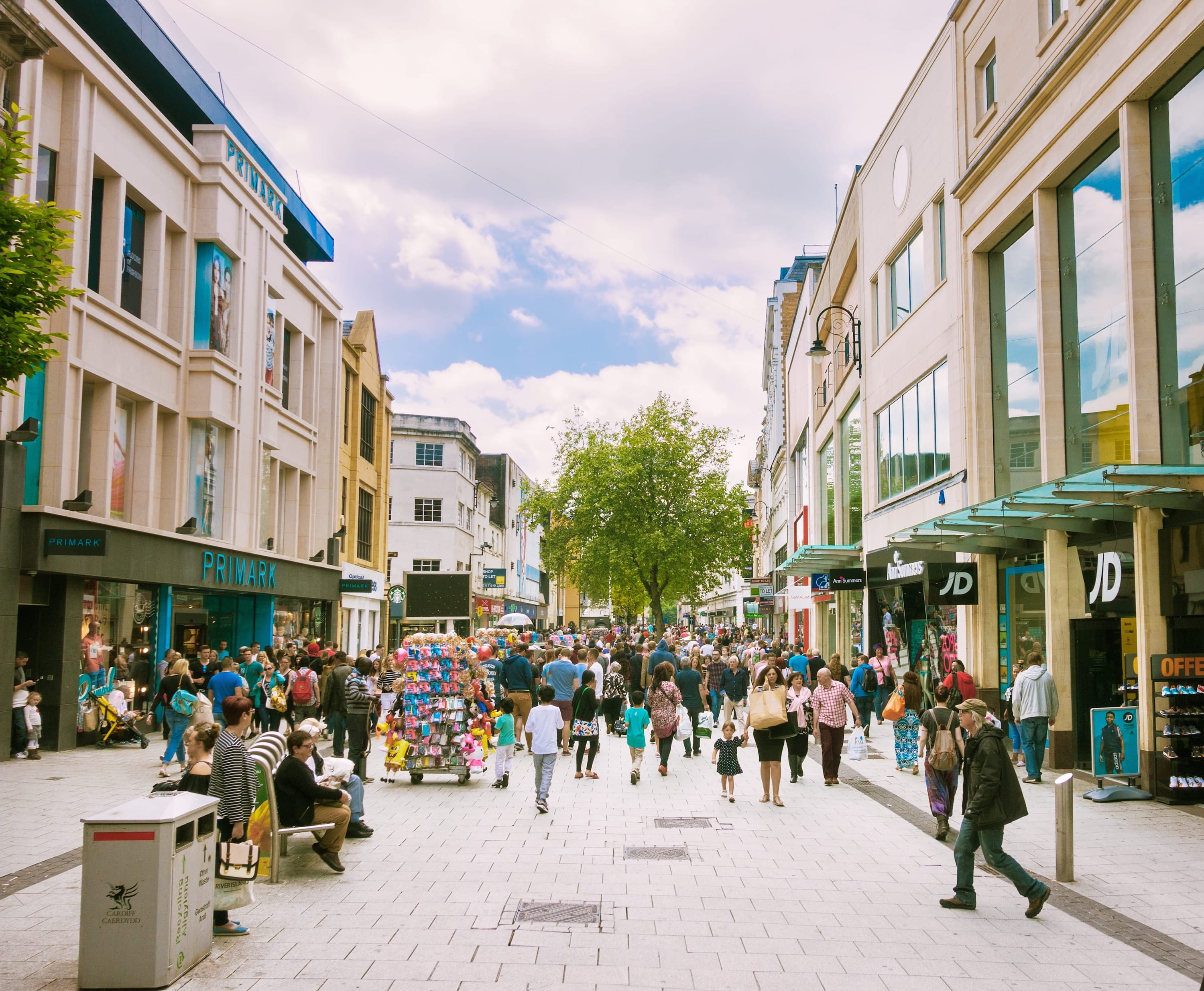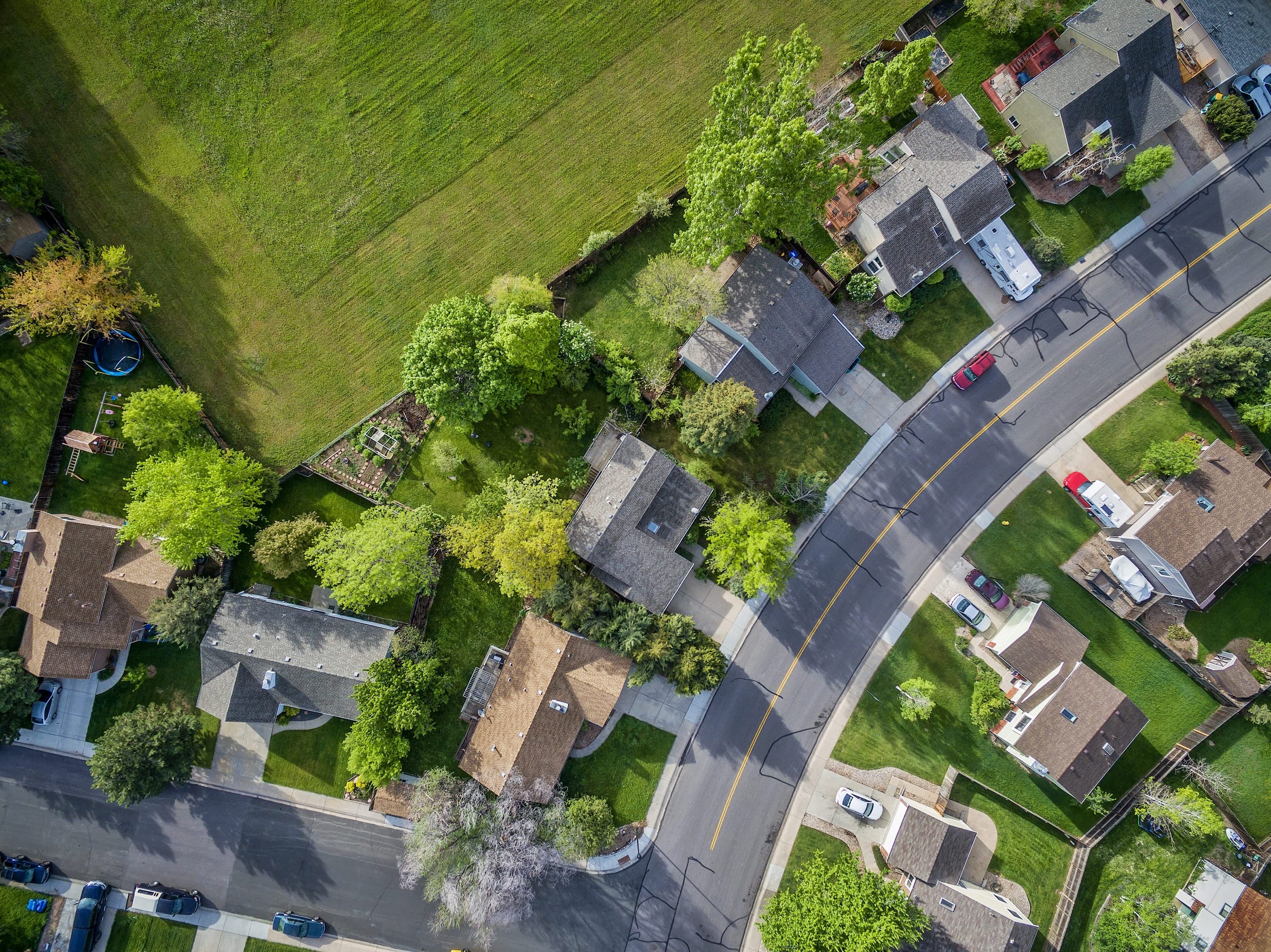Survey Says
People love walkability. Walkable streets enhance livability, increasing social cohesion and encouraging physical activity while reducing traffic and improving air quality. The National Association of REALTORS’ (NAR) 2015 National Community and Transportation Preference Survey found that 79% of respondents believe it to be very or somewhat important to be “within an easy walk of other places and things in the community” when selecting their next home. According to an Urban Land Institute Survey, 50% of people said that walkability is either the top or a high priority in where they would choose to live.

Queen Street in central Cardiff, busy with Saturday shoppers.
Millennials and baby boomers are leading the movement. An American Planning Association survey found that 56 percent of millennials and 46 percent of baby boomers prefer to live in more walkable, mixed-use neighborhoods. Many boomers are now empty nesters and approaching retirement. The NAR survey notes that this can often lead to them downsizing their homes to live in a walkable urban downtown, a suburban town center or a small town. On the other end of the age spectrum, millennials are just now beginning to emerge from the nest and living on their own. This coming-of-age group also favors urban downtowns and suburban town centers, mostly for lifestyle reasons and the convenience of not having to own a car. Overall, the NAR survey says only 12 percent of future homebuyers pursue drivable suburban-fringe houses.

Fort Collins, CO, USA – May 20, 2016: Aerial view of typical residential neighborhood along Front Range of Rocky Mountains in Colorado in springtime
Show me the money
Coming with the desirability to live walking distance to amenities, walkable housing may fetch a hugher price than other locations when it comes time to sell. According to a recent NBC report, there is a positive correlation between walkability and real estate values. Currently, walkable housing is the most expensive residential real estate in the country. Depending on the market, walkable housing may fetch a premium of 40-200 percent greater than drivable, suburban housing.
A similar study conducted by CEOs for Cities found that for each extra point in Walk Score a home received, the value increased by anywhere from $700 to $3,000, and that homes considered to have “above-average” walkability netted sellers a premium of $4,000 – $34,00. Research commissioned by Living Streets shows that “making places better for walking can boost footfall and trading by up to 40%, while good urban design can raise retail rents by up to 20%”
Why? The study says, “The apparent value that consumers attach to walkability likely stems from many sources. Consumers in more walkable neighborhoods may save money on driving (and transit) by virtue of the closer proximity of many destinations. It seems likely that many consumers value the time savings associated with walkable neighborhoods – even for trips taken by other modes. The variety of uses close by and the implied opportunities for serendipitous interaction may also make a neighborhood more interesting.”
Your neighborhood may impact your healths
Being walkable to amenities may sometimes be a double-edged sword for some, according a study published in the International Journal of Environmental Research and Public Health. Adriana Zuniga-Teran, a researcher at the University of Arizona, set out to study how four common neighborhood designs influence residents’ physical activity and overall well-being, using a “walkability model” that takes into account nine different areas: neighborhood connectivity, land use, density, traffic safety, surveillance, parking, resident experience, green space and community.
As assumed, her findings included the fact that those who live in mixed-use traditional neighborhoods, with a combination of residential and accessible commercial areas, do the most walking. In general, walking has a host of health benefits. Among other things, it can halve your risk of heart disease, help prevent the onset of Type 2 diabetes, and even slow cognitive decline in adults – especially those with existing conditions such as Alzheimer’s.
Interestingly though, Adriana’s study also found that those same residents also reported the lowest levels of mental well-being and the highest perceptions of crime in their neighborhood. Researchers say that those low scores could be linked, at least partially, to issues of neighborhood maintenance. “If people see incivilities—like trash, litter, or graffiti—they may feel like there’s crime going on,” says Adriana.
Those who live in suburban developments reported the highest levels of mental well-being. “Suburban developments have large lots and trees, and nature provides many well-being benefits,” Zuniga-Teran says. Along with green spaces, income levels and crime buffers associated with suburban neighborhoods also factor into someone’s perceived wellbeing.

